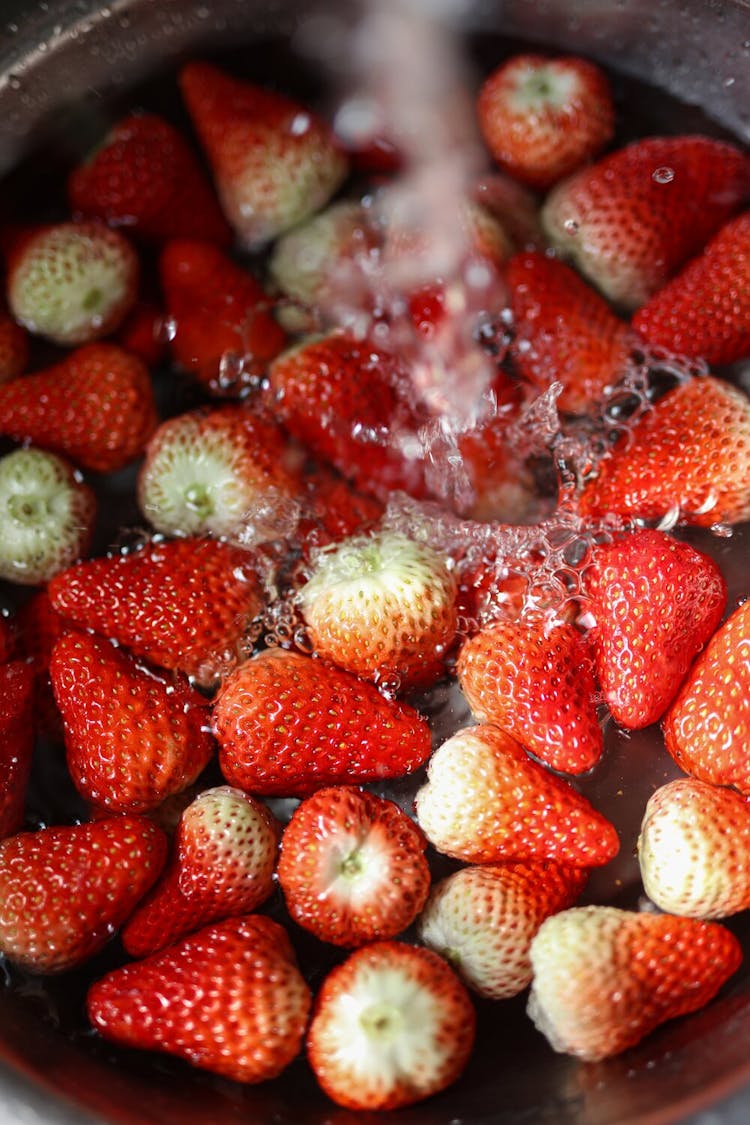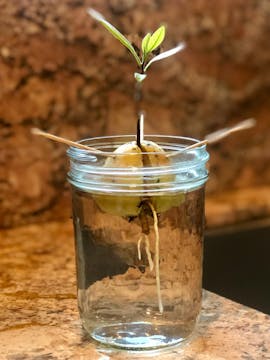How To Grow Fruit Trees
Wondering what to do with your leftover fruit? Our guide on how to grow fruit trees from leftover pits and seeds will make for a fun project!

HOW TO GROW 7 DIFFERENT FRUIT TREES FROM LEFTOVER PITS AND SEEDS
Fruit trees can grow big or small, so you don't always need tons of space to keep one. And the exciting thing is, you can grow fruit trees from seeds and pits of the fruit you're eating every day. Although your trees may not always produce tasty fruit, growing trees from seeds can make an interesting project and you'll be using what you already have to hand. Here's our guide on how to grow fruit trees from leftover pits and seeds.
HOW TO GROW AN APPLE TREE FROM SEEDS
When you grow an apple tree from seeds, it usually produces quite different apples than the fruit they came from, and often become cross-pollinated with an inedible apple tree. They can also take 7 to 10 years to grow fruit, so you'll want to keep this apple tree as a fun experiment rather than a reliable food source.
- Collect about a dozen seeds from a few of your favourite types of apple (they have a 30% germination rate).
- Place your seeds on a moist paper towel or some damp moss, then put this in an airtight container. Store them in the fridge for at least 6 weeks.
- Plant the sprouts 1.5cm into well-watered soil after the last frost of the year, either indoors or outside. Apple trees look stunning in their own pot.
- If growing inside, make sure you place the seeds on a well-lit windowsill.
- Water enough to make sure the soil doesn't dry out, then less often as the plant grows larger.
HOW TO GROW A PEAR TREE FROM SEEDS
When you grow a pear tree, the pears will face the same cross-germinating problem as apples, often producing inedible fruit. Like apples, they're usually grown through careful breeding or by grafting a branch from an existing tree. But you can still grow a pear tree from seeds as an ornamental item - and for tasty fruit after 7 to 10 years if you're lucky!
- Collect quite a few pear seeds as only around 1 in 4 will germinate properly. Don't leave them too long before starting the growing process.
- Let the seeds dry and carefully wrap every 2 or 3 seeds in a moist paper towel. Place them in an airtight container and store them in the fridge for 90 days.
- Remove the seeds and put them in a glass of warm water for 2 days.
- Plant the seeds 2.5cm deep into well-drained soil. Make sure they're in the right spot to receive at least 6 hours of sunlight.
- Keep the soil moist by watering frequently.
HOW TO GROW A PLUM TREE FROM STONE
Planting a plum tree from your stone may also produce a very different fruit than your original plum, for better or worse. But they're fairly easy to grow and should produce around 60cm of growth every season.
- Collect and wash a few plum pits, then place them on a windowsill for a few days to let them dry out. This shrinks the seeds and makes them easier to extract. Afterwards, use a nutcracker to break the pits and extract the seeds inside (being careful not to damage them).
- Place your plum seeds in a glass of water. If they sink, you can germinate them, but if they float, they won't grow. Leave viable seeds in the glass overnight.
- Remove the seeds and place them in a jar filled with moist compost, then seal it. Refrigerate the jar for 6-8 weeks, or until roots start to appear.
- Plant the plum seeds about 5 cm deep into well-draining soil. If you're planting in pots, make sure you only place one seed into each pot.
- The plants should be grown in a cool, bright area and kept moist but not over-watered.
HOW TO GROW STRAWBERRIES FROM SEEDS
Although it's not exactly a tree, growing a strawberry bush is a great alternative if you don't want to wait the time it takes to grow a mature tree. Strawberry plants are easy to care for and you should see fruit a year after planting.
- You can plant your strawberry seeds anytime in the year, but keep them indoors if it's early spring, until the last frost has passed.
- Press the seeds into soil and keep it moist at all times.
- You'll start to see roots 1 to 6 weeks after you planted.
- Make sure your strawberry plants get at least 8 hours of direct sunlight every day.
Once you've grown your very own delicious strawberries, you could even give making your own jam a try...luckily we have a recipe right here!
HOW TO GROW ORANGE TREES FROM SEEDS
Orange fruit develops more quickly on trees grown from grafted branches than seeds, and those trees are more hardy too. But otherwise, you can grow fruit on an orange tree from seed in 15 years.
- Collect plenty of orange seeds to increase your chances of seeing a tree through to maturity. Clean your seeds in tepid water.
- Soak the seeds in a glass of water for at least 2 hours. Remove the smaller seeds and seeds that float, as these won't grow.
- Plant each remaining seed 1.5 cm under sterile soil in separate, well-draining pots.
- Moisten the soil but don't allow it to become soaking, then cover each pot with an airtight bag or wrap. Sunlight isn't needed at this stage of growth.
- Store the pots in a warm place, but make sure the soil stays moist throughout (so in front of a radiator is not ideal).
- Once the seeds have sprouted, remove the coverings and move them to a sunny area.
HOW TO GROW NECTARINE FROM SEEDS
Growing a nectarine tree is satisfyingly easy, even if it probably won't produce fruit like the nectarine you just ate. When well-cared for, it should produce fruit within 2 to 4 years, making it one of the fastest growing plants you can grow at home.
- Gather several nectarine pits and let them dry out on a windowsill. This can take anywhere from a few days to a few weeks, depending on how dry and warm your windowsill is.
- Once the pits have dried, the seeds inside will have shrunk. Crack open the pits with a nutcracker and take the seeds out.
- Disperse the seeds in a jar with potting soil and add a small amount of water to moisten the soil. Seal the jar and place it inside the fridge.
- Leave the jar in the fridge and check every couple of weeks for prominent roots. This may take a few months.
- Remove your seedlings from the jar and plant each one separately 2cm deep into pots with good drainage.
- Keep your plants indoors. If you want to take them outside, you should do so in late winter or early spring, and once they're established.
HOW TO GROW AVOCADO FROM SEED
If you'd like to try growing a tree that starts its life hydroponically, an avocado tree is the perfect choice. And growing an avocado seed could save you a lot of money in the long run. The only downside is they can take anywhere from 3 to 15 years to fruit, and it's a bit of a lottery how that fruit will taste!
- Remove the pit from the avocado, being careful not to damage it with a knife. Soak it in water for a few minutes, then gently scrub only the remaining pulp off.
- Find the flat end - this is the bottom of the avocado pit where the roots will grow from. The top is slightly pointier - the sapling will sprout from here.
- Pierce firmly into the sides of the pit with four cocktail sticks that point downwards slightly.
- Place the pit into a clear glass of water, propped up by the cocktail sticks, so that the bottom of it remains submerged at all times.
- Keep your glass on a well-lit windowsill and change the water every week, to protect your plant from mould, bacteria and fungus growth.
- Wait anywhere up to 8 weeks for your avocado pit to crack all the way to the bottom, where eventually a taproot will emerge. Shortly after, a small sprout will appear at the top of the pit. Never allow your taproot to leave the water.
- Pot your avocado plant in soil when it's about 15cm long, leaving the top half of the pit exposed. Keep your avocado tree indoors, make sure it receives as much sun as possible and water it frequently to keep it moist but not soaking.
For other tips on how to use your avocado seed (and even the peel!) head to this blog post.


